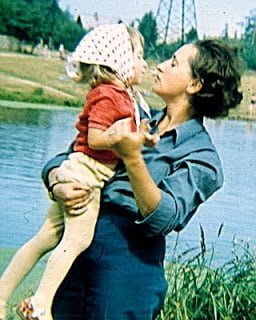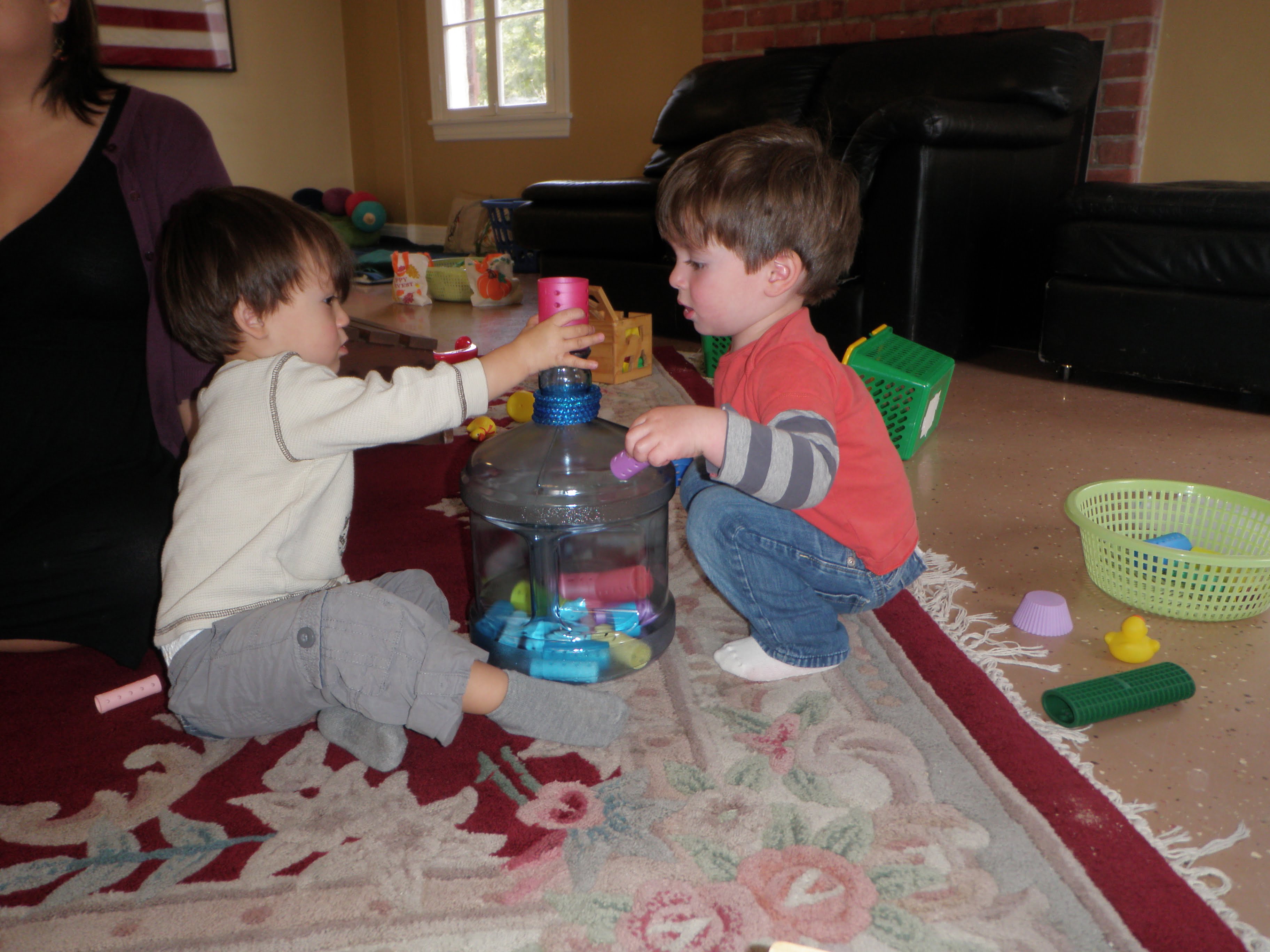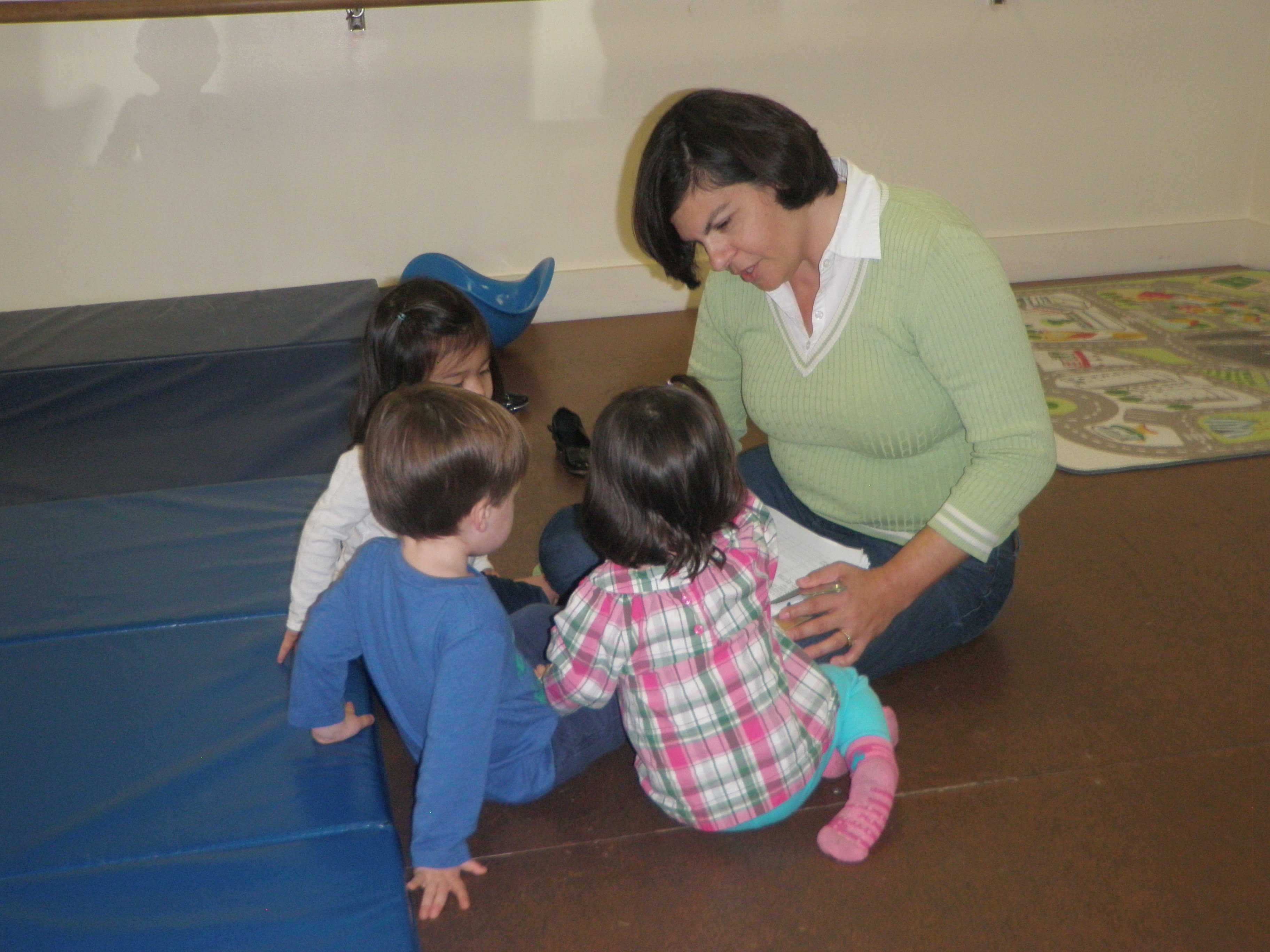In this guest post, Jessica Bunting—an incredible teacher, a compassionate human being, and my RIE Practicum student—shares her personal journey with discomfort as both a parent and educator. She explores how we can find confidence in setting boundaries and how, paradoxically, embracing struggle can bring us closer to comfort.
How do we find comfort in discomfort as parents? Most of us want to mitigate any discomforts our children may experience. We want to “soften the blow.” We want to protect them. After all, our child’s entire survival has depended on us from the beginning.
There is a fear of discomfort in parenting. A fear of a child not getting enough to eat, or that we aren’t providing enough; doing enough. Another fear of holding a boundary and the behavior that might follow. A fear, as a parent, to witness the feeling of discomfort in our children and not being able to fix that discomfort. All of these scenarios are relatable to me, as a mother of two I have feared many of them as well.
My children are four and six, and I still find myself struggling with their discomforts. The scenarios have changed a bit as they have grown, but nevertheless, they instill a similar battle within me.
I have said yes to something I might not normally agree to, solely to avoid a tantrum. I’ve said yes—maybe because I was with friends or simply because I was tired and didn’t have the energy to enforce the boundary. No judgments here, and honestly, it’s okay to change your mind—but more on that later.
In my years working with children and families and as I’ve embarked on this journey of working with and observing families as an RIE Practicum Student this idea of discomfort has come up often and the more, I ponder it, the more I see it in everyday situations.
When we are taking care of infants – every cry is a form of communication: “I’m hungry;” “I’m tired;” “I’m cold;” “I need some reassurance that you are still here to tend to me.” Therefore, we respond. The younger the infant the more quickly we respond. We meet every need. Mainly because every need, must be met. We are the only reason they will survive. We are building trust in those early days, weeks, and months.
I believe this is exactly what we should be doing, at least that’s how I viewed it. Personally, I wasn’t interested in keeping a schedule, sleep training, or giving a certain number of minutes for tummy time (okay, maybe I paid a little too much attention to that last one). I just responded. It didn’t matter what time of night or how many times a night, I responded.
The rules are changing…
However, there comes a time when needs turn into wants. The tide changes, and your not-so-little infant starts to figure life out a little bit. They start to feel freedom, choices, options, likes and dislikes. They start to become more independent. Before we know it, and with no warning at all, we are meeting the wants of a very demanding toddler. In the words of the great Ruth Anne Hammond once said to me, “The rules are changing.” And so, begins a new chapter of parenthood. The rules are changing and we better figure out quickly how we change with them.
Boundaries
The beginning of understanding wants vs. needs is exemplified when we introduce boundaries. What boundaries do we hold and why? The ‘why’ is an important part and to be fair it has come back to bite me a few times. I have found myself in a power struggle wondering how I got there and suddenly searching for my ‘why’ and I don’t have one. Why does he have to wear his jacket? He is clearly telling me he isn’t cold. Why am I forcing this? Is this life or death? Does it matter right now? Do I trust that he will ask for it if he gets cold? Upon these realizations, I slowly backed down and redirected myself.
While some boundaries are non-negotiable and may vary across families, family dynamics, cultures, and situations—such as having guests over or solo parenting—I’ve discovered that, for the most part, it’s okay to adjust the rules. However, knowing the day-to-day non-negotiables is essential. If it works for you, it might be beneficial to sit down with your partner to identify them. Which is strictly about safety? What do you value? What do you hope to instill in your child?
Boundaries are uncomfortable
Boundaries are uncomfortable. For everyone involved, at least at first. They also take time. Time and practice. As you can imagine boundaries weren’t a huge hit with my toddlers, but this is one of the foundations in building a trusting relationship with your child. When we set a boundary with a child we are telling them: “I care about you, I see you and I’m in charge. I’ve got this situation under control and I can handle your discomfort.”
For a child to be in control is scary, even if they won’t tell us that. Children don’t know the way and when a parent comes in and leads them there is a sense of relief. Relief that someone else is taking charge – someone else knows the way.
Of course, there are many age-appropriate situations we can give them control over. For example, “Which pants do you want to wear? Blue or brown? Would you like to bring your hat to the park? Should we pack a pear or apple for a snack?” These small areas help them to contribute to their day and their routines, they have control over these areas. They have important input.
Wondering where to start?
Start small and start at home or a place that is a predictable environment. Once you begin being consistent, the bigger boundaries won’t feel so big to you and your child – that’s the hidden truth. When we start with small boundaries, our children get used to this feeling of discomfort – they have exposure to it.
For example, my children are accustomed to hearing “What you find at the park, stays at the park.” My son has a love of sticks and believe me when I say I have a quality pile of sticks at home for him to play with outside. When he was a toddler, he would of course ask to bring home every stick he found. After talking about it with my husband we started letting the kids know before we arrived at the park, if we found something we could play with it there and then we would leave it when it was time to go home. We had a few tears and we’ve broken the rule a few times when we found something really cool. However, now they understand the boundary with no reminder – they simply drop their items at the edge of the park as we leave.
This is a rather small boundary, insignificant really, but it helped lay the foundation for bigger ones like when we are at a store and my children ask to purchase something; they are familiar with an object not necessarily coming home. I can simply say “It is really cool and I’m not buying that today” and it’s no big surprise. However, it is a very big surprise when I say “yes”!
Madga Gerber said, “If we can learn to struggle, we can learn to live.”
Boundaries bring discomfort, discomfort with toddlers is an opportunity to learn to struggle. As parents we have the opportunity to be a part of the struggle; to guide the way, to lead by example. To show them that while this is a difficult part of life: “you are not alone. I’m here with you.
These boundaries are setting the foundation for discomforts in the future as well as building trust that even if it is uncomfortable, you are still there and your love never ceases. They can depend on you to be there with them in their most frustrating moments. The boundaries create a routine that emphasizes to our children that they know we will never cease to be by their sides and although we can’t always fix the problem (especially when they get older and the problems get more complex) we can be present with them in the pain.
Our children don’t have to mask their discomfort and we don’t have to rush it. We can simply come alongside and acknowledge it.
How are we to reap the joys of comfort, to truly know goodness, if we never experience the pains of discomfort? If we never face hardship, we can never fully appreciate the goodness life has to offer. Our goal as parents shouldn’t be to shield our children from life’s discomforts but rather to walk through them together.
Let us know if you need more information about RIE® Parent-Infant Guidance™ Classes.
Kindly,
Jess














